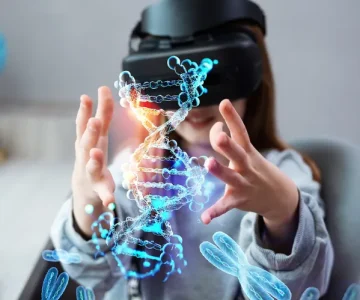The debut of Apple’s Vision Pro marks an exciting moment for both technology and education. This spatial computing headset blends digital experiences with the real world, offering a fresh perspective on how learning can be delivered and experienced. Rather than simply replacing a computer or a screen, it reimagines the learning environment entirely.
A Leap Beyond the Traditional Classroom
The Vision Pro combines elements of virtual, augmented, and mixed reality to create an interactive 3D learning space. With its ultra-sharp displays, intuitive eye and hand tracking, voice commands, and visionOS integration, it removes the boundaries of flat screens. Learners can work on what Apple calls an “infinite canvas,” where information isn’t trapped in windows but becomes part of the surrounding environment. This opens the door for richer, more dynamic exploration of subjects from multiple perspectives.
Turning Lessons into Experiences
Instead of reading about history or science, students can virtually step inside these subjects. The headset’s crisp 4K-per-eye resolution and immersive Spatial Audio bring lessons to life—whether it’s walking through ancient cities, zooming in on molecular structures, or studying the human body in intricate detail. Such sensory-rich environments have the power to improve both comprehension and retention by turning abstract concepts into tangible experiences.
Collaboration Without Boundaries
The Vision Pro could transform communication in education. By integrating advanced FaceTime features, it allows life-size virtual interactions for discussions, group work, and presentations. This blurs the line between remote and in-person learning, making collaboration seamless for students regardless of location. In this way, geography becomes less of a barrier to accessing quality education.
Empowering Educators with New Tools
For teachers, the Vision Pro offers flexibility and personalization in lesson design. visionOS enables a non-linear approach to teaching, allowing educators to tailor content to different learning styles and paces. They can adjust scale, realism, and interactivity to match student needs, and even provide real-time feedback by stepping directly into virtual projects. This level of engagement could help bridge the gap between theory and understanding.
Challenges to Consider
Despite its promise, the Vision Pro comes with obstacles—most notably its $3,499 price tag, which could limit adoption in budget-conscious schools. There’s also the lack of traditional hand controllers for certain applications, which may affect compatibility with existing software that relies on tactile input. Battery life remains another consideration, particularly for extended classroom use.
The Future of Spatial Learning
Even with these limitations, the Vision Pro sets a bold direction for educational technology. It has the potential to shift learning from passive observation to active participation, encouraging curiosity and deeper engagement. If implemented thoughtfully, it could help shape a more immersive, inclusive, and effective approach to education in the years ahead.





